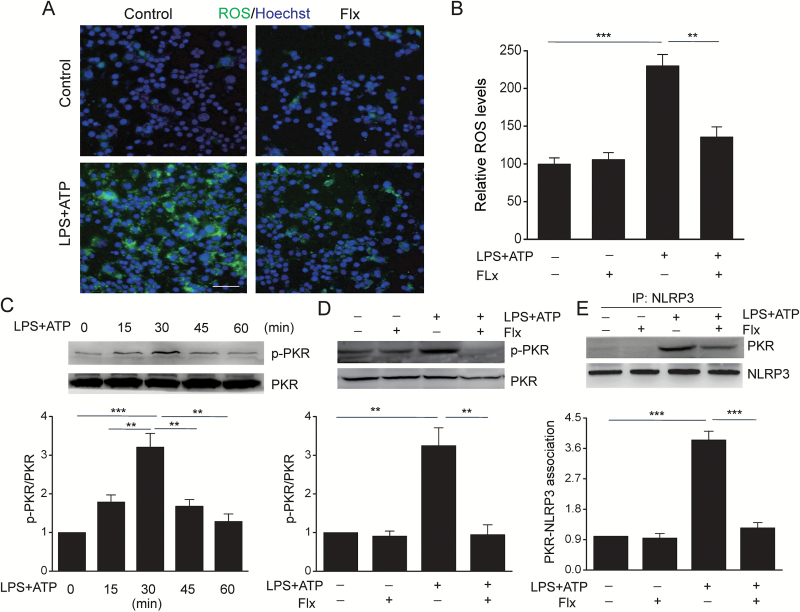Figure 3.
Fluoxetine reduced ATP-induced ROS production, RNA-dependent protein kinase (PKR) phosphorylation and the association of PKR with NLRP3 in macrophages. Bone marrow-derived macrophages (BMDMs) were pretreated with fluoxetine (Flx, 10 μM) for 1 hour, then stimulation with LPS+ATP. (A) Cells were stained with H2DCF-DA labeling and images captured with a fluorescence microscope. (B) The quantitative analysis of ROS levels by a Titertek Fluoroskan II microtiter fluorescence plate reader. (C) LPS-primed BMDMs were stimulated with ATP at indicated time points and phosphorylated and total PKR were determined by Western-blot analysis (** P<.01, *** P<.001 vs LPS+ATP 30min). (D-E) BMDMs were pretreated with fluoxetine (Flx, 10 μM) for 1h, followed by stimulation with LPS+ATP for 30 minutes. (D) Representative immunoblots and quantitative analysis of phosphorylated and total PKR. (E) Immunoprecipitation and immunoblot analysis of the PKR-NLRP3 interaction. Data are represented as means ± SEM from 2 replicates in 3 independent experiments. ** P<.01, *** P<.001 vs LPS+ATP. There were no significant differences among -LPS-ATP, -LPS-ATP+Flx, and +LPS+ATP+Flx.

